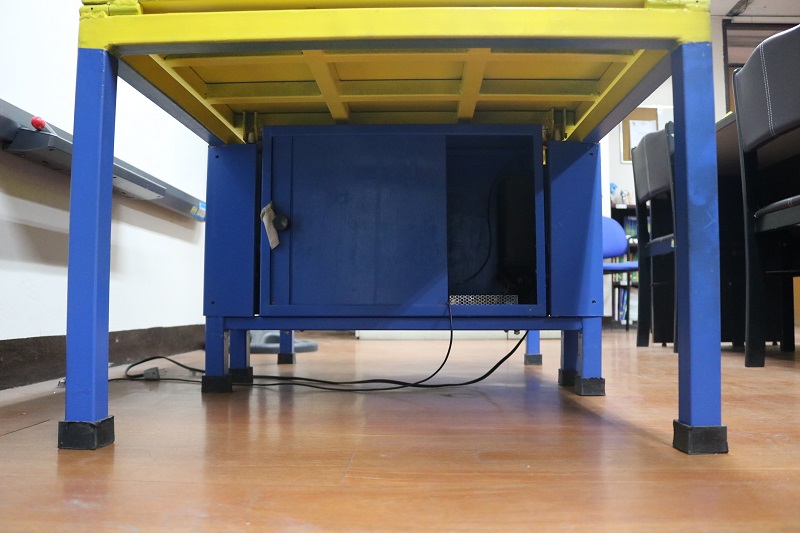
The recent consecutive earthquakes in Luzon and in Visayas, in the Philippines, have caused quite a scare. This had caused more people to become aware of the importance of being prepared for tremors.
“The Big One”, a cataclysmic event that the Department of Science and Technology-Philippine Institute of Volcanology and Seismology (DOST-PHIVOLCS) has been forewarning for years, is expected to reach up to a magnitude of 8.5.
Such massive force can substantially destroy populated areas in Metro Manila, including residential areas, businesses, and schools.
As reported, a group of researchers from the Philippine Normal University (PNU), the De La Salle University (DLSU), and the Technological University of the Philippines developed a high impact-proof automated study desk for preschool children to help prepare educational institutions for earthquakes.
What is LAMESA?
The Life-Saving Automated Mesa to Endure Seismic Activity (LAMESA) combines technology with capacity building in terms of knowledge and infrastructure to best address such probable disaster, particularly in educational institutions.
“La mesa” or “mesa” means “table” in Filipino.
It serves not only as a study desk for kindergarten students, but also as a warning system when earthquakes occur.
It is a safety infrastructure for students to use and a learning tool for disaster preparation for the kids as well.
Although earthquake preparation is instilled in the curriculum or in the teachers’ lessons, this ‘passive’ preparedness may not holistically develop survival skills among the youth.
In developing the LAMESA prototype, the team held extensive interviews and consultations with early childhood education experts on how the concepts of disaster risk reduction and preparedness may be integrated in the kindergarten curriculum using the prototype.
Safety desk
The desk, which measures 1.22 m in length, 0.69 m in width and 3.327 cm in tabletop thickness, uses lightweight but highly strong and elastic materials to comply with kindergarten standards.
Its height of 0.57 m guarantees that up to four kindergarteners, with an average height of 0.91 m, or 3 feet, will be able to hide under the table.
The steel table top is coated with epoxy paint to make it durable and slick, while the steel legs come with rubber footings to minimize sliding during tremors.
Its centre legs, meanwhile, support a storage bin with sliding door for lighting devices plus ample food and water supplies for up to nine kindergarteners.
Moreover, LAMESA is equipped with an accelerometer, which is a device that senses motion. This accelerometer will feed seismic measurements to a Wi-Fi-enabled microcontroller.
This microcontroller, in turn, will then simultaneously trigger the actuator which causes the table top to fold 16 degrees upward.
In addition, LAMESA has a built-in alarm system that activates when vibration levels are above-normal. It also has a 13-bit liquid crystal display, which shows the intensity level and instructs people to evacuate when needed.
LAMESA’s system and program design boast of good peak ground acceleration. With a fixed response time of four seconds, this allows the children to duck, cover, and hold much sooner.
On average, a strong earthquake that lasts about 30 to 40 seconds may cause falling debris. LAMESA’s four-second response time provides ample time to shield children from debris during an earthquake.
More improvements ahead
The prototype design is a collective effort of a group of engineers, geology and volcanology experts, machinists, woodworkers, and technicians.
The final design was evaluated by various stakeholders including parents, teachers, school principals, and a district supervisor.
Overall, evaluators gave LAMESA a big plus for its features, design and aesthetics, and mechanism functionality.
Some areas, however, need to be improved, such as surface hardness, texture, and wiring placement.
The researchers ensured that a modified design would undergo strength test and include auxiliary materials like safety reminders and training kits.
They are also contemplating on using fiberglass instead as well as using a wall sensor to manage a set of desks.
















